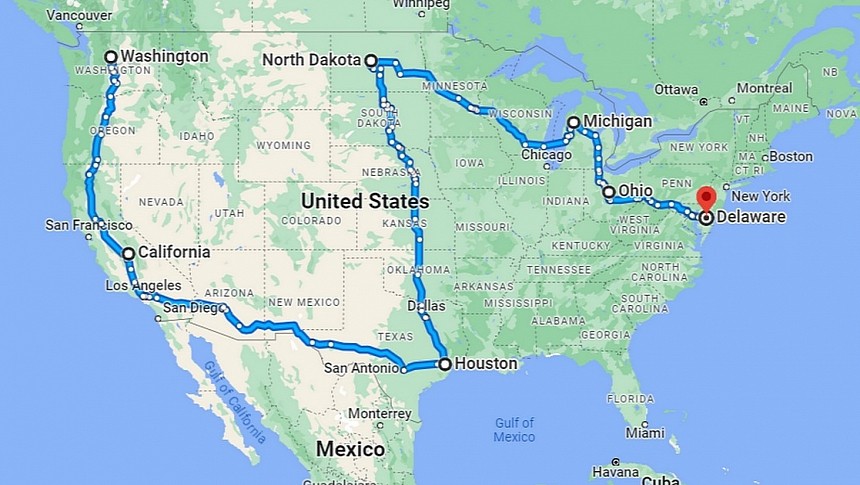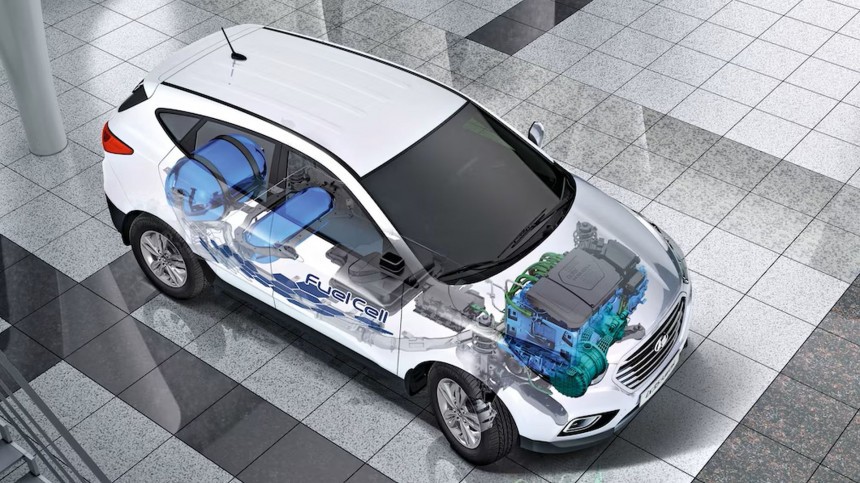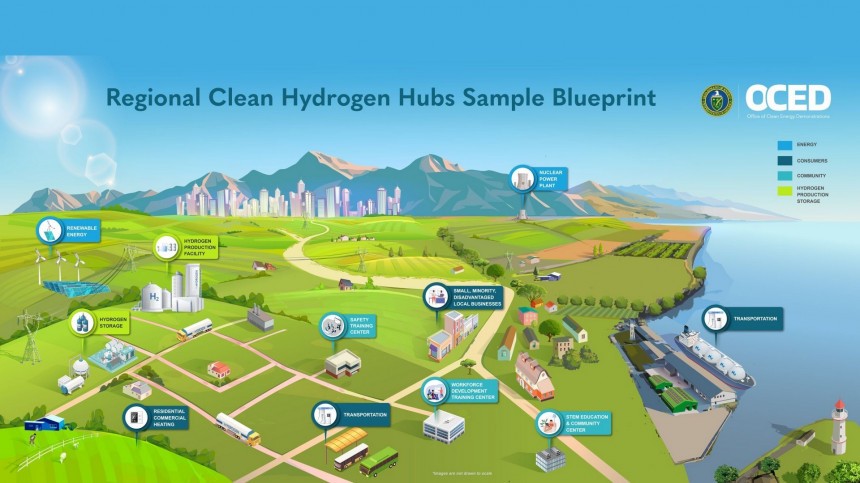Hydrogen in transportation lives the chicken-or-egg paradox. Companies do not invest in producing this gas for automotive use because there is not enough demand. At the same time, automakers do not put that much money into fuel cells because people will not have where to find hydrogen. It seems the American government wants to end this by creating the necessary supply with public investments. To be more precise, we're talking about $7 billion, which will create seven new hydrogen hubs around the country.
The Department of Energy released more information about it and made sure to mention it was "part of President Biden's Investing in America agenda, a key pillar of Bidenomics." In several countries, this communication would be forbidden by voting and election laws for a simple reason: the Department of Energy is a State Department, not something that belongs to a politician or a party. While people discuss if Joe Biden – who's 80 years old – is not too old to try for reelection, he already said he will run for that as the Democrat candidate. As a candidate, presenting any of his government acts as something personal would be equivalent to using the state as an election tool. Apparently, that's perfectly fine in the US.
Apart from the controversial presentation of these measures, those who were anxious to see hydrogen's chicken-or-egg dilemma solved in the US can celebrate. If things go according to plan, they will be able to buy a Toyota Mirai or a Hyundai NEXO in many more states than just California. Other carmakers may also decide to offer similar products, not to mention the fuel cell electric trucks (FCETs) like the Nikola Tre FCEV that could benefit from this more extensive hydrogen offer.
One massive issue for fuel cell electric vehicles (FCEVs) resumes to affordability, both of hydrogen and fuel cells. A first-generation car with fuel cells recently had to have them replaced in Germany. Till Westberg was shocked to discover it would cost him €103,764.17 ($109,041 at the current exchange rate) to put his 2016 Hyundai ix35 FCEV to drive again. He used it for only 84,000 kilometers (52,195 miles) and seven years. Although the ix35 FCEV was produced on a very low scale, that's still scary.
As for hydrogen, Alexander Vlaskamp said in June that it "is far too expensive, almost four to five times what it would be interesting for our customers to use it." The MAN CEO is betting more on battery electric trucks (BETs), which is in line with what Volkswagen sees as the future. They have just never mentioned what happens when trucks carrying nine or more battery packs similar to those used in cars need to have them replaced. In Tesla's case, they cost $20,000 a pop.
It seems the American government is aware of at least one of these concerns. The Department of Energy promises these hydrogen hubs – officially named H2Hubs – will produce "low-cost, clean hydrogen—a valuable energy product that can be produced with zero or near-zero carbon emissions."
Here's the catch: of the seven new H2Hubs, at least three will use natural gas, which is the same method used for most of the hydrogen currently used in the world. We're talking about the Appalachian (ARCH2), Gulf Coast (HyVelocity), and Midwest (MachH2) Hydrogen Hubs. This essentially creates what is classified as grey hydrogen – obtained by steam methane reformation (SMR) or gasification without carbon capture. Considering what the Department of Energy disclosed, only the first two will have carbon capture involved.
The other four H2Hubs are the California (ARCHES), Heartland, Mid-Atlantic (MACH2), and Pacific Northwest (PNW H2). They will rely on renewable energy and nuclear to make green hydrogen. MACH2 will repurpose "historic oil infrastructure" to transport hydrogen through pipelines. Each of these projects will receive around $1 billion, but they will not generate the same amount of jobs, which is quite a mystery.
While the ARCHES H2Hub will generate 220,000 direct jobs – 130,000 in construction and the other 90,000 in permanent positions – the Heartland Hydrogen Hub will create only 3,880 direct jobs, precisely divided into 3,067 construction positions and 703 permanent occupations. Despite the similar investments and goals, the job creation disparity between these projects is something only a closer look at all the details could clarify.
Now, we'll have to wait for these H2Hubs to be concluded and in operation to see if they can make a difference in transport decarbonization. The Department of Energy knows that cars and trucks are only a small fraction of the problem and said the hubs will help lower "emissions from hard-to-decarbonize industrial sectors that represent 30 percent of total US carbon emissions." Port operations, "production of fertilizer," "electric generation," and "cold climate space heating" are among the targets. As long as the H2Hubs can really deliver blue or green hydrogen at prices that make sense, the $7 billion the US is planning to invest may turn into a worthy investment.
Apart from the controversial presentation of these measures, those who were anxious to see hydrogen's chicken-or-egg dilemma solved in the US can celebrate. If things go according to plan, they will be able to buy a Toyota Mirai or a Hyundai NEXO in many more states than just California. Other carmakers may also decide to offer similar products, not to mention the fuel cell electric trucks (FCETs) like the Nikola Tre FCEV that could benefit from this more extensive hydrogen offer.
One massive issue for fuel cell electric vehicles (FCEVs) resumes to affordability, both of hydrogen and fuel cells. A first-generation car with fuel cells recently had to have them replaced in Germany. Till Westberg was shocked to discover it would cost him €103,764.17 ($109,041 at the current exchange rate) to put his 2016 Hyundai ix35 FCEV to drive again. He used it for only 84,000 kilometers (52,195 miles) and seven years. Although the ix35 FCEV was produced on a very low scale, that's still scary.
It seems the American government is aware of at least one of these concerns. The Department of Energy promises these hydrogen hubs – officially named H2Hubs – will produce "low-cost, clean hydrogen—a valuable energy product that can be produced with zero or near-zero carbon emissions."
Here's the catch: of the seven new H2Hubs, at least three will use natural gas, which is the same method used for most of the hydrogen currently used in the world. We're talking about the Appalachian (ARCH2), Gulf Coast (HyVelocity), and Midwest (MachH2) Hydrogen Hubs. This essentially creates what is classified as grey hydrogen – obtained by steam methane reformation (SMR) or gasification without carbon capture. Considering what the Department of Energy disclosed, only the first two will have carbon capture involved.
While the ARCHES H2Hub will generate 220,000 direct jobs – 130,000 in construction and the other 90,000 in permanent positions – the Heartland Hydrogen Hub will create only 3,880 direct jobs, precisely divided into 3,067 construction positions and 703 permanent occupations. Despite the similar investments and goals, the job creation disparity between these projects is something only a closer look at all the details could clarify.
Now, we'll have to wait for these H2Hubs to be concluded and in operation to see if they can make a difference in transport decarbonization. The Department of Energy knows that cars and trucks are only a small fraction of the problem and said the hubs will help lower "emissions from hard-to-decarbonize industrial sectors that represent 30 percent of total US carbon emissions." Port operations, "production of fertilizer," "electric generation," and "cold climate space heating" are among the targets. As long as the H2Hubs can really deliver blue or green hydrogen at prices that make sense, the $7 billion the US is planning to invest may turn into a worthy investment.






































